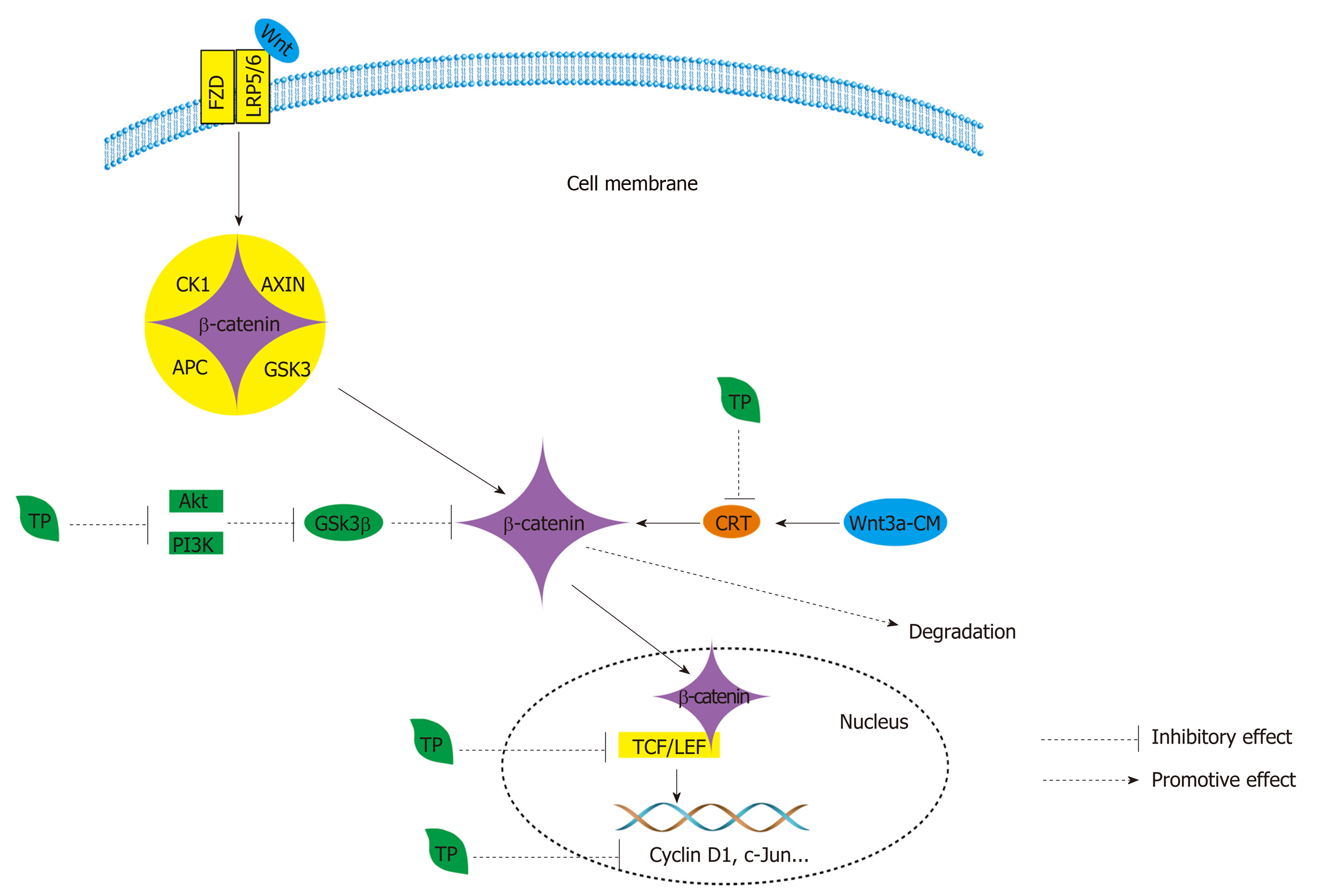Copyright
©The Author(s) 2020.
World J Gastroenterol. Feb 14, 2020; 26(6): 562-597
Published online Feb 14, 2020. doi: 10.3748/wjg.v26.i6.562
Published online Feb 14, 2020. doi: 10.3748/wjg.v26.i6.562
Figure 6 Wnt signaling is regulated by the cytoplasmic β-catenin destruction complex, which consists of the core proteins AXIN, adenomatous polyposis coli, casein kinase 1, and glycogen synthase kinase 3[209].
Wnt ligands bind to the frizzled and low-density-lipoprotein-related protein 5/6 coreceptor complex and cause the accumulation and nuclear translocation of β-catenin. In the nucleus, β-catenin engages the T cell factor (TCF)/lymphoid enhancer-binding factor transcription factors to activate the Wnt transcriptional program[210]. In the Wnt/β-catenin pathway, Tea polyphenols (TPs) can inhibit β-catenin/TCF-4 activity and reduce β-catenin protein expression and further reduce the expression of two downstream signaling targets, namely, cyclin D1 and c-Jun. Black TPs can also suppress the accumulation of β-catenin by suppressing the phosphorylation of GSK3β by decreasing the activation of PI3Knase and Akt. Furthermore, TPs also promote the degradation of β-catenin by inhibiting β-catenin response transcription. APC: Adenomatous polyposis coli; CK1: Casein kinase 1; GSK3: Glycogen synthase kinase 3; TCF: T cell factor; TP: Tea polyphenol; LEF: Lymphoid enhancer-binding factor; LRP5/6: Low-density lipoprotein-related protein 5/6; CRT: β-catenin response transcription.
- Citation: Wang ST, Cui WQ, Pan D, Jiang M, Chang B, Sang LX. Tea polyphenols and their chemopreventive and therapeutic effects on colorectal cancer. World J Gastroenterol 2020; 26(6): 562-597
- URL: https://www.wjgnet.com/1007-9327/full/v26/i6/562.htm
- DOI: https://dx.doi.org/10.3748/wjg.v26.i6.562









